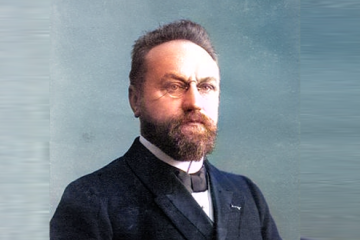
Christian thinkers have proposed a range of ideas about what science is, ranging from reading the book of God’s works and “thinking God’s thoughts after Him” to studying how the Universe runs itself if God doesn’t intervene. Views like these were expressed by early modern scientists (Galileo, Bacon, Newton and others) who were Christians of one sort or another, but they needn’t be the last word for a theistic perspective on science.
Ever since studying history of science as an undergraduate, I’ve been dissatisfied with the Enlightenment humanist motifs inherent in much of what passes for Christian thinking about the nature of science and scientific progress. By and large it’s assumed that there is a basic scientific method that results in an ever-more detailed, precise and unified description of the functioning of reality – which is the aim of science. Today I want to share a model that’s less simplistic and arguably more realistic. This is Dick Stafleu’s “theory of the opening process”, expounded in his works Theory and Experiment and Time and Again.
We start with a more nuanced definition of what science is. For Karl Popper and his followers, it’s all about dreaming up better hypotheses and testing them – but this arguably derives from a humanistic worldview where science advances by sheer creative genius (Popper says little about how scientists come up with successful hypotheses). For Stafleu, the aim of science concerns laws: “the opening up of the law side of nature”. “Law” is used in the broadest sense, for general relationships and patterns that hold in the world: gravitation, the existence of electrons, freezing points, food chains, etc, while “opening up” is a metaphor for discovery that emphasises the givenness of the created order alongside our freedom to describe it as best we can. It seems to evoke opening up a set of Russian dolls, or opening windows from one domain into another, and perhaps also creating unimagined new spaces, as when a house is opened up by removal of interior walls.
The central point of Stafleu’s model is that scientific progress has multi-dimensional structure: our view is impoverished if we simply think of linear progress. I’ve tried to depict the elements of this model in the diagram above. The body of scientific understanding is represented here by a tree that can only be accessed when people are convinced that reality is law-abiding and ordered (the trunk). There are then three important distinctions:
- The tree of science (its law statements) must be distinguished from the ground of our experience of particular reality (subjects, or facts). For example, data arise from particular situations and entities at moments in space and time, and it’s by induction that we move towards general statements and models (up into the tree). Conversely, there are particular things and events, like the Solar System or the evolutionary history of a species, on which scientific understanding can subsequently be brought to bear (pale green arrow).
- Scientific progress has often come through putting numbers on things. ‘Mathematising‘ phenomena that are intrinsically physical, biotic, sensory, etc, is what Stafleu calls objectification (upper-right arrow): processes occurring among physical or biotic subjects are projected onto a numerical plane as objects on which measurements can be made. At the same time, very different kinds of scientific advances have also been made by applying new instruments to create novel phenomena (lower-left arrow) – as in the case of Galileo’s telescope, Boyle’s air-pump or Hooke’s microscope. Such phenomena may in turn be mathematised.
- Starting from a given body of theory about some aspect of reality, progress can be made on the one hand by recognising analogies that reveal general, unifying laws of nature – such as Newton’s first law of motion that recognises uniform motion as a simple kinetic reality, or the law of universal gravitation that recognises the spatial aspect of gravity (upper left arrow). On the other hand, progress can be made by describing things more and more precisely – like the structure of an atom or cell, or phylogenetic relationships among species – progressively specifying nature’s structure and types, and building more accurate models (lower right arrow).
Here I’ve only been able to give a superficial gloss of Stafleu’s model, for more explanation of which I can recommend Chapter 1 of Time and Again or Chapter 9 of Theory and Experiment. What I find inspiring about this view is its richness, capturing so much more of what goes on in scientific discovery than do typical accounts of scientific method. Some people find Reformational accounts like this to be baroque and implausibly complicated. But as a biologist who’s regularly amazed at the complexity of the created order, I find such a multifaceted model of science itself very plausible indeed.
- Flowers not flavours in AI: How large language models resonate with the beauty of creation - May 19, 2025
- Artificial thinking? - April 2, 2025
- A degree of critical thinking - September 2, 2024


